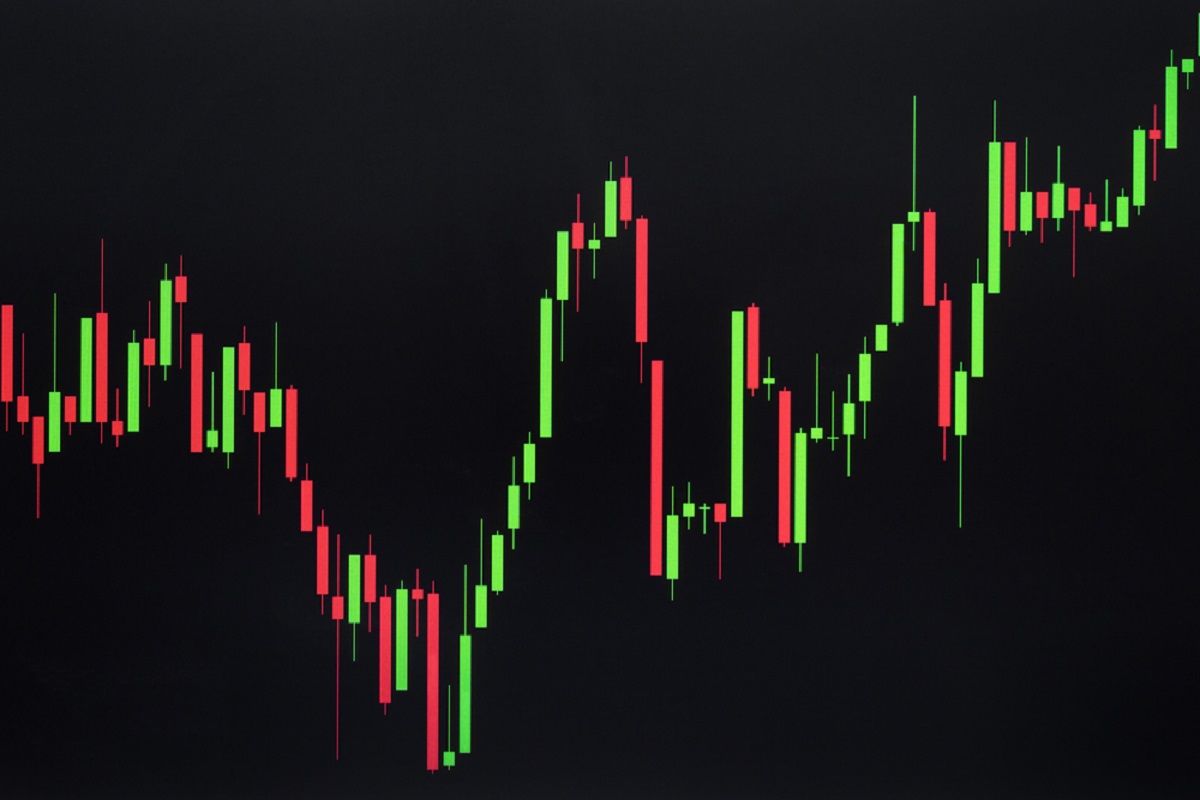From the time we’re kids, we all want to be owners… Of our own bedroom… our own car… our own home…
And eventually, our big, fat retirement account.
After all, ownership is key to wealth.
And in the stock market, understanding who owns the outstanding shares in your favorite company — and whether they’re buyers or sellers — is keenly important.
Let’s start by examining the company (the stock’s issuer) and the people who run it (the management).
The “Big O” — Ownership
Now, we like it when management owns stock, when they have “skin in the game.”
The idea being, of course, that the more shares management owns (and stands to profit from down the road), the harder and smarter they’re likely to work.
The Securities and Exchange Commission’s (SEC) website offers a wealth of very helpful information about when management is awarded stock and when they buy or sell it.
There are other websites and other ways you can peer into what insiders are buying and selling.
Understanding Insider Ownership
Once there, search for your company’s filings by entering the company name or ticker symbol.

And since we’re talking about ownership, you’ll look for your company’s Ownership Disclosures (the red arrow at the lower right of the image below) on the SEC’s website.
Here’s the page for Apple, Inc. (NasdaqGS: AAPL).
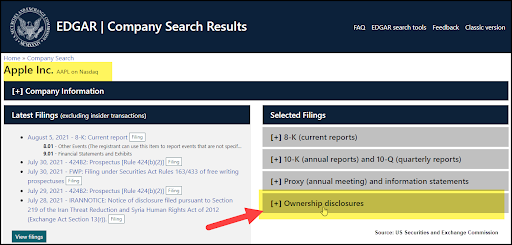
We’re interested in Form Type 4. Because any time a member of management, or any other company insider, acquires or disposes of their company’s securities, they must file a Form 4 with the SEC.
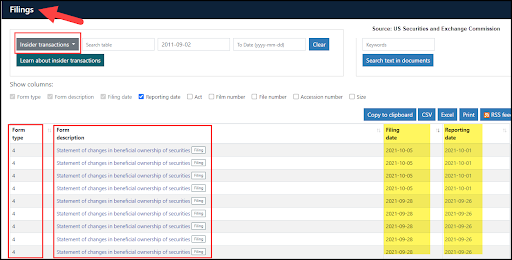
Within a public company, insiders include anyone who:
- Is a director or other senior officer (“management”).
- Is any person or entity that beneficially owns more than 10% of a company’s voting shares.
(In public companies, “beneficial” ownership refers to securities held by a brokerage or in a “street name” versus a registered name. Most of us own shares beneficially, without physical paper certificates or becoming officially registered, yet still benefiting from ownership.)
Again, Form 4 lets us see what management is doing with their stock.
Below, we see Apple’s Chief Operating Officer, Jeff Williams, filing for both the acquisition and disposition of AAPL stock:
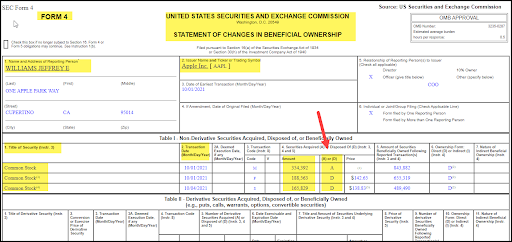
Let’s pause here to “bust a myth.” When we see an insider selling her shares, it’s tempting to wonder why. And it can be easy to become suspicious. After all, if this is such a great company, why is this person selling?
In truth, there are many reasons for insider selling — to finance a new home… pay off the kids’ college loans… handle a sudden family medical expense…
That said, if management is selling into their own market, especially when the company is not performing well, that’s not a good sign. It’s also one that says you likely don’t want to own that company either.
And while there are many reasons insiders sell shares, there’s only one reason insiders buy shares. It’s because they believe those shares will be worth more in the future than they’re worth right now.
One of Wall Street’s favorite ‘green lights’ on Form 4 is when a member of management is buying shares of his/her own company in the open market.
Wise investors watch closely for those purchases.
Next, you want to watch what the big institutional-sized investors — the funds — have been doing.
Land of the Giants — Institutional Buying and Selling
The large hedge funds hold the greatest sway over stocks. Smart investors take that seriously, and watch where these funds invest their money.
Institutional investors account for over 85% of ALL daily trading volume on the New York Stock Exchange (NYSE).
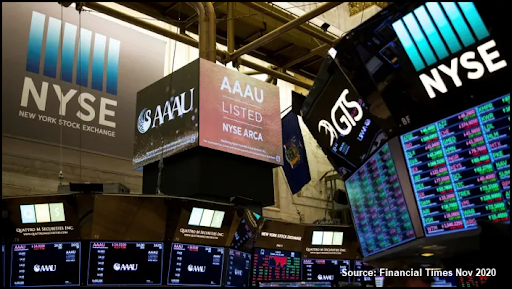
How much money is that?
In 2020, McKinsey & Company Financial Services reported that the North American asset management industry controlled more than $115 trillion in assets under management.
The following three SEC forms can reveal what the funds are buying or selling, and their purpose.
Form 13F-HR
You can learn about the investments funds are making by looking at their 13F filings, and usually the 13F-HR (Holdings Report).
(Sometimes, you’ll see a Combination Report when a portion of a fund’s holdings are listed on someone else’s Report.)
Examples of such funds include Berkshire Hathaway, Inc.; Blackstone, Inc.; The Vanguard Group, Inc. and Renaissance Technologies, LLC.
So, although the funds usually wait as long as they can to file on the stocks they acquire, minimally, you can get some great investment ideas from their lists of holdings.
You can also gain a really great education as to the immense size of the holdings that these funds own.
Here’s how you’ll find Form 13F:

Step 1: On the SEC’s website, go to “Filings”
Step 2: Click on EDGAR – Search & Access
That will pull up the page with the search option as illustrated below.
I used Berkshire Hathaway merely as an example.
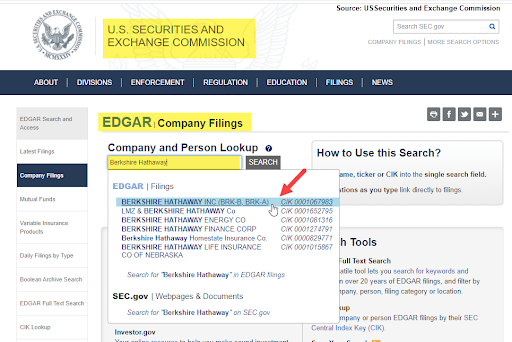
The Filings page lists all filings the fund or company has made.
You’re looking for Form 13F-HR, and you click on the word “Filing.”
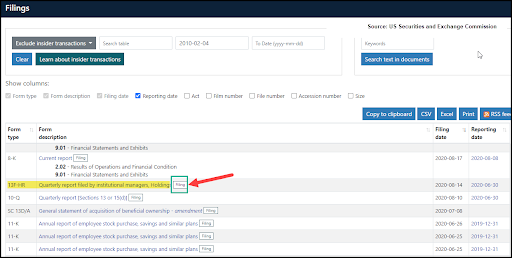
That shows a page, often a lengthy scrolling affair, that lists all the fund’s holdings during any given quarter.
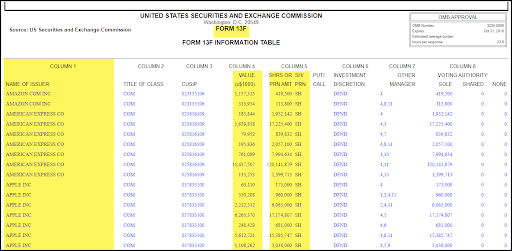
It’s like looking into a treasure chest!
Forms 13G and 13D
Ever looked at a price chart, seen a gigantic spike in volume and wondered, “who’s buying up all those shares?”
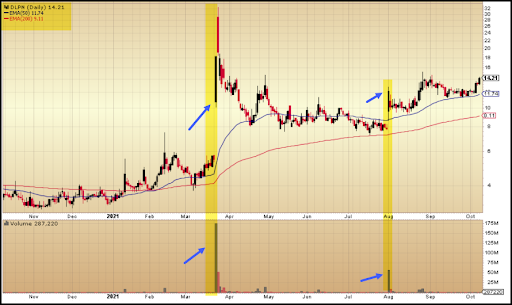
If you have, then pay attention to what follows.
To find out who (or what) is loading (or unloading) that stock, go back to the SEC’s website and enter the company name or ticker symbol.
You want Form 13G here. Remember, in this case, “G” means “good.”
Here’s why…
When a fund buys 5% or more of a specific class of a company’s outstanding shares, but with no intent to vote those shares, they’re filing as a passive investor.
Once the fund reaches that threshold, it must file with the SEC within 45 calendar days.
Once filed, the fund must also file ownership amendments if their position moves above 10%. That must be done within 10 days of the end of the month in which the purchase is effected.
Then, if their ownership increases or decreases by 5%, they must also file again in that same time period.
Below is a cutaway from a Form 13G when Berkshire Hathaway acquired over 255 million shares of AAPL stock:
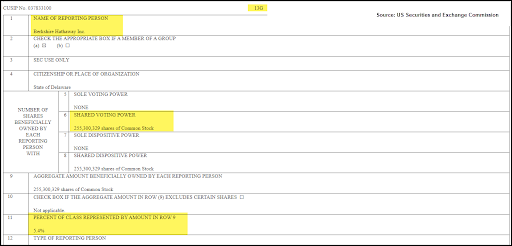
If their ownership reaches 20% of the outstanding shares, they must file within 10 days of the purchase, and also include the purpose or intent of that purchase. Such large ownership positions can indicate an ulterior motive, such as a takeover.
And that brings us to the last filing, Form 13D. Some investors think of Form 13D as the “Danger” zone. It’s really all about the filer’s intent.
Anytime a beneficial purchase of 5% or greater is filed with the intent to influencethe issuing company, especially by votes, the Form must be filed within 10 days.
This is the one to really watch for if there’s any rumblings of shareholder dissatisfaction or certainly, a takeover attempt, especially if by a hostile party.
Again, being able to understand who owns what in the markets could give you a major leg up in your trading.
In fact, most investors don’t know it, but one-in-four merger and acquisition deals involve insider trading.
So you can imagine the advantage you’d gain by being able to spot a “tell” that shows when a deal could be about to happen.
And that’s the story of the most important forms of ownership that you, as a smart investor, want to be well-informed about.
Remember to check back here every Monday.
In the next segment of my series “Knowledge Is Power (and Profit),” I’ll talk about two more very important SEC forms plus a list of related fundamental keys to smart investing.
Thanks again for joining me. And here’s to your successful investing.
Bill Spencer
Read Next: Tesla’s Downfall is Near…Here’s the Next Big Thing
In Business..
You’re either growing or you’re dying according to Forbes.
To the layperson, Tesla is the shiny object in the car industry.
They’re the hottest automaker and the most valuable car company in the world.
But to those who play with billions of dollars in the stock market…
They have to stay not 1, but 2, and 3 steps ahead of the game…
…And have identified that Tesla is actually DYING.
There’s another company that’s about to take COMPLETE CONTROL of the Electric Vehicle (EV) market.
You may have heard of this company….
They currently DOMINATE several markets.
And are rewriting the rules of the EV game and are about to take over.
So which company is secretly destroying TESLA?



